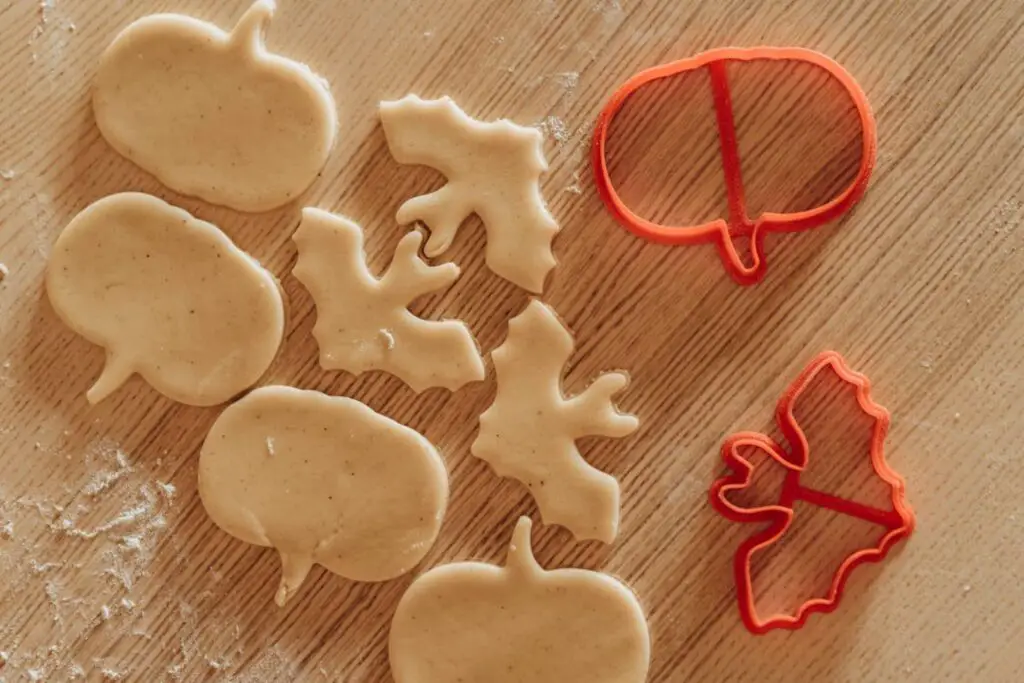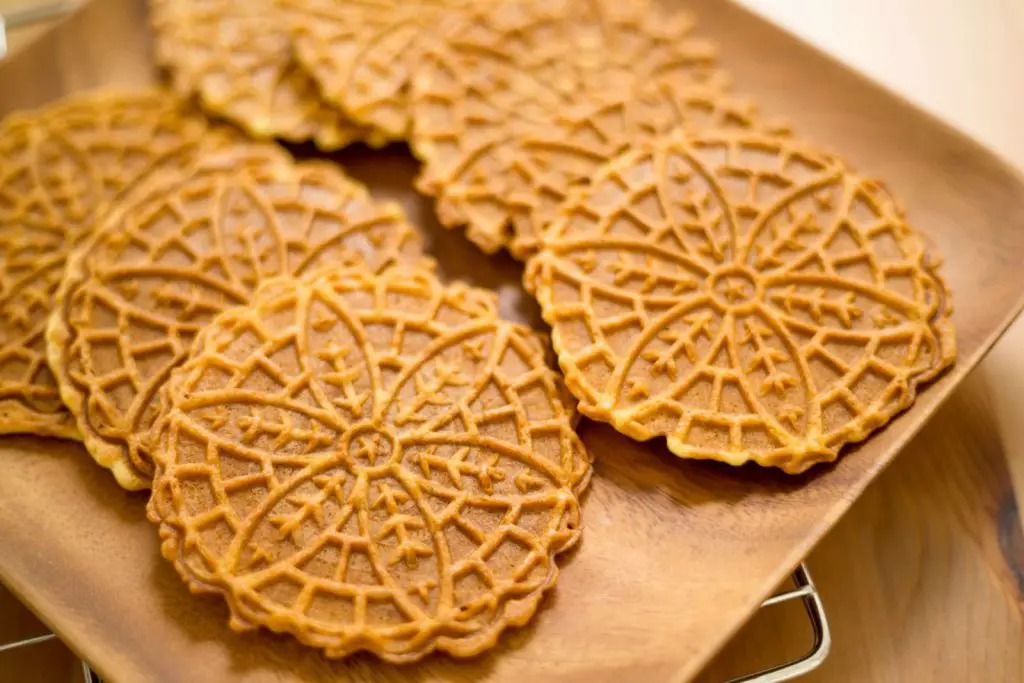
A delightful world of blinis, bite-sized pancakes that are perfect for any occasion. Blinis are a traditional Russian delicacy made from a simple batter of flour, milk, eggs, and yeast. These small, fluffy pancakes are typically served as a base for a variety of delicious toppings, such as caviar, smoked salmon, sour cream, or fresh herbs. With their light and airy texture, blinis offer a delightful canvas for an array of flavors. Whether you’re hosting a brunch, a cocktail party, or simply want to indulge in a savory or sweet treat, blinis are a versatile choice. If you want to enjoy blinis at your convenience or have leftovers to save for later, freezing them is a wonderful option. In this guide, we’ll explore the art of freezing blinis, sharing expert tips and techniques to ensure that their texture and taste are preserved, allowing you to enjoy these delightful pancakes whenever you desire, whether it’s for a festive gathering or a cozy breakfast at home.
Here are the simple steps to freeze blinis:
Step 1: Prepare Fresh Blinis
To begin the process of freezing blinis, it’s important to start with a batch of fresh blinis that are cooked and ready to be frozen. You can either follow a traditional buckwheat blini recipe or get creative with different flavors and variations according to your preferences. The key is to have blinis that are fully cooked before freezing them.
If you have a go-to blini recipe, use that to make a fresh batch. If not, there are numerous recipes available online that you can choose from. The ingredients typically include flour, eggs, milk, baking powder, and a pinch of salt. Some recipes may also call for additional ingredients such as butter, sugar, or herbs to add extra flavor.
Follow the recipe instructions carefully, mixing the ingredients together to form a smooth batter. Allow the batter to rest for a few minutes to let the flavors meld. Heat a non-stick skillet or griddle over medium heat and lightly grease it with oil or butter.
Once the skillet is hot, spoon the blini batter onto the cooking surface, using about a tablespoon of batter for each blini. Cook the blinis for a couple of minutes on each side, or until they turn golden brown and slightly puffed. Flip them carefully with a spatula to ensure even cooking.
Continue cooking the blinis in batches until you have made the desired quantity. It’s important to note that the blinis should be fully cooked before freezing them, as freezing will not cook them further.
Once the blinis are cooked, remove them from the skillet and transfer them to a wire rack or a clean surface to cool completely. It’s crucial to let them reach room temperature before moving on to the next step of the freezing process. This ensures that the blinis retain their texture and don’t become soggy when frozen.
Preparing a fresh batch of blinis gives you the flexibility to customize them to your taste and ensures that they are cooked to perfection before freezing. Whether you stick to the traditional recipe or experiment with unique flavors, the key is to have a batch of delicious blinis ready to be preserved for later enjoyment.
Step 2: Cool the Fresh Blinis
Once you have finished cooking the blinis, it’s important to allow them to cool completely before proceeding with the freezing process. This step is crucial to ensure that the blinis maintain their texture and don’t become soggy or develop condensation when they are frozen.
To cool the blinis, transfer them from the skillet or griddle onto a wire rack or a clean surface. By placing them on a wire rack, air can circulate around the blinis, allowing them to cool more evenly. Alternatively, you can place them on a clean surface, making sure they are spread out in a single layer.
Allowing the blinis to cool at room temperature is essential because placing warm or hot blinis directly into the freezer can create condensation inside the packaging. This moisture can lead to ice crystals forming on the blinis, affecting their texture and taste when thawed.
The cooling process typically takes around 20 to 30 minutes, depending on the thickness of the blinis and the ambient temperature. During this time, the blinis will gradually cool down, reaching room temperature. You can test their temperature by gently touching the center of a blini to ensure that it is no longer warm.
While waiting for the blinis to cool, it’s important to keep them in a clean and hygienic environment to prevent any contamination. Avoid stacking or overlapping the blinis as this can cause them to stick together or become compressed, affecting their shape and texture.
By allowing the blinis to cool completely, you are ensuring that they are ready for the freezing process. This step helps maintain their quality during freezing and prevents any unwanted moisture buildup that could impact their taste and texture when thawed later on.
Step 3: Arrange Blinis to Freeze
After the blinis have cooled completely, it’s time to arrange them in a way that ensures they freeze individually and don’t stick together. This step helps maintain their shape and texture during the freezing process.
To begin, prepare a baking sheet or tray by lining it with parchment paper. The parchment paper prevents the blinis from sticking to the surface and makes it easier to remove them later on. If you don’t have parchment paper, you can use silicone baking mats or lightly grease the tray with oil or butter to prevent sticking.
Place the cooled blinis on the prepared tray in a single layer. Ensure that there is enough space between each blini so they are not touching or overlapping. This allows air to circulate around each blini, promoting even freezing and preventing them from sticking together.
If you have a large number of blinis to freeze, you may need to use multiple trays. This ensures that each blini has enough space and doesn’t come into contact with others during the freezing process. You can stack the trays in the freezer if needed, but make sure there is enough space between them to allow proper airflow.
While arranging the blinis, you can also take the opportunity to shape them if desired. For example, you can fold the blinis in half or roll them up to create different shapes. This can add visual appeal to your frozen blinis and make them more interesting when serving.
By arranging the blinis in a single layer on parchment-lined trays, you are ensuring that they freeze individually and maintain their shape. This step makes it easier to handle the blinis when frozen and prevents them from sticking together, allowing you to easily retrieve the desired quantity without any hassle.
Step 4: Flash-Freeze the Blinis
Once you have arranged the blinis on the trays, it’s time to flash-freeze them. Flash-freezing is a method that quickly freezes the blinis individually, helping to maintain their shape, texture, and prevent them from sticking together during storage.
Transfer the trays of blinis to the freezer. It’s important to place them on a level surface to prevent any shifting or tilting during freezing. Make sure there is enough space in the freezer to accommodate the trays without crowding.
Allow the blinis to freeze in the freezer for about 2 hours or until they are firm. The exact freezing time may vary depending on the thickness and size of the blinis, as well as the temperature of your freezer. Freezing them for approximately 2 hours is a general guideline to ensure that they are frozen through.
Flash-freezing the blinis individually is essential to prevent them from sticking together during storage. When blinis freeze slowly or come into contact with each other before they are fully frozen, they can become clumped together, making it difficult to separate them when needed.
By flash-freezing the blinis, each piece will freeze quickly and independently. This process helps maintain their individuality and allows you to easily retrieve the desired quantity without having to thaw the entire batch.
Flash-freezing the blinis individually is a key step in the freezing process. It ensures that the blinis freeze quickly, retain their individual shape, and prevent them from sticking together during storage. This method allows for easy retrieval and usage of the desired quantity of blinis without thawing the entire batch.
Step 5: Package the Blinis
After the blinis have been flash-frozen and are frozen solid, it’s time to package them for long-term storage. Proper packaging is crucial to maintain the quality and freshness of the blinis while preventing freezer burn or contamination.
Start by removing the trays of frozen blinis from the freezer. Carefully lift the blinis off the parchment paper or silicone mat, ensuring that they remain intact.
Next, prepare airtight freezer-safe containers or resealable freezer bags for packaging the blinis. Airtight containers are ideal as they provide a strong seal and protect the blinis from exposure to air and moisture. If using resealable freezer bags, choose high-quality ones that are designed for freezing.
Transfer the blinis into the containers or bags, making sure to arrange them in a single layer if possible. This prevents them from sticking together and allows for easier portioning and retrieval later on. If using bags, it can be helpful to place the blinis in a flat position and avoid overcrowding to maintain their shape.
If you’re using resealable bags, it’s important to remove any excess air from the bag before sealing it tightly. This helps minimize air exposure, which can cause freezer burn and affect the quality of the blinis. You can use the water displacement method by partially sealing the bag, then submerging it in a bowl of water, allowing the water to push out the remaining air. Once the air is removed, seal the bag completely.
Proper packaging of the blinis in airtight containers or resealable freezer bags helps maintain their quality and protects them from freezer burn. It also allows for easier storage and organization in the freezer, making it convenient to retrieve the desired quantity whenever you need them.
Step 6: Label and Date
Properly labeling and dating the packages of frozen blinis is an important step in maintaining organization and keeping track of their freshness. This information helps you identify the blinis and ensure that you use them within the desired time frame.
Start by taking a marker or label and write the current date on each container or bag that holds the blinis. This allows you to easily determine how long the blinis have been in the freezer. It’s helpful to write the date clearly and prominently on the front or top of the packaging for easy visibility.
In addition to the date, it’s also beneficial to label the containers or bags with the contents, specifying that they contain blinis. This helps you quickly identify the package among other frozen items in your freezer and prevents confusion when retrieving them.
Labeling the packages of blinis is particularly useful if you have a variety of frozen foods stored in your freezer. It helps you differentiate between different items and prevents mix-ups when you’re looking for a specific item to thaw and enjoy.
By labeling and dating the packages, you can practice proper rotation of your frozen blinis. This means using the oldest ones first and ensuring that they are consumed within a reasonable timeframe for optimal quality and taste.
Taking a few moments to label and date the packages may seem like a small step, but it greatly assists in organizing your freezer and keeping track of the freshness of your blinis. It’s a simple yet effective way to maintain order and ensure that you can easily find and use your frozen blinis whenever you desire them.
Step 7: Store in the Freezer
After properly labeling and dating the packages of blinis, it’s time to store them in the freezer. Proper storage is crucial to maintain the blinis’ quality and preserve them for an extended period.
Choose a spot in your freezer that maintains a constant freezing temperature. Ideally, set the temperature of your freezer to 0°F (-18°C) or below. This temperature ensures that the blinis remain frozen solid and prevents any potential thawing or spoilage.
When selecting the storage location, consider placing the blinis in an area where they won’t be disturbed frequently. Avoid placing them in the freezer door, as it experiences temperature fluctuations when opened frequently. Instead, choose a shelf or compartment in the main body of the freezer.
Make sure there is sufficient space around the packages of blinis to allow proper airflow. This helps maintain a consistent freezing temperature and prevents any pressure or compression on the packages, which could affect their shape or texture.
Stacking the blinis packages is acceptable if necessary, but try to avoid placing excessive weight on them to prevent crushing. If you have multiple packages, it can be helpful to organize them by placing the older packages in the front and the newer ones behind. This allows for easy retrieval of the oldest blinis when needed, following the principle of first in, first out (FIFO).
By storing the labeled blinis packages in a constant freezing temperature and organizing them appropriately, you are ensuring that the blinis remain in optimal condition for future use. This step sets the foundation for maintaining their quality and allows you to enjoy them whenever you desire a delicious treat.
How long can blinis last in the freezer?
Blinis can last in the freezer for approximately 2 to 3 months. Properly packaged and stored in an airtight container or freezer bag, blinis can maintain their quality and taste during this period. It is advisable to label the container with the freezing date for reference and consume them within the recommended timeframe for the best results.
Other related questions
How do you defrost blinis?
To defrost blinis, transfer them from the freezer to the refrigerator and allow them to thaw overnight. Alternatively, you can place the frozen blinis in a sealed plastic bag and immerse them in cold water for a quicker thawing process. Avoid using hot water or microwaving as it can cause the blinis to become soggy.
Can you refreeze blinis?
Refreezing blinis is not recommended. Once blinis have been thawed, it is best to consume them promptly. Refreezing can negatively impact their texture and taste, leading to potential quality degradation. It is advisable to freeze blinis in portion sizes that can be conveniently thawed and consumed to avoid the need for refreezing.
How do I know if the blinis has gone bad after being frozen?
To determine if frozen blinis have gone bad, there are a few signs to look out for. Firstly, check for any noticeable changes in appearance, such as discoloration or freezer burn. Secondly, examine the texture of the blinis; if they have become excessively dry, mushy, or have an off-putting texture, it may indicate spoilage. Lastly, trust your sense of smell; if the blinis emit an unusual or unpleasant odor, it is best to discard them to avoid any potential foodborne illnesses.
Can blinis be frozen with toppings?
Blinis can be frozen with toppings, but it is generally recommended to freeze them without toppings for better results. Toppings such as spreads, creams, or delicate ingredients may not freeze well and can result in textural changes or loss of flavor. It is advisable to freeze plain blinis and add the desired toppings after thawing and reheating for the best taste and texture.
Can I freeze blinis made with different types of flour?
Yes, you can freeze blinis made with different types of flour, including buckwheat or gluten-free flour. However, it’s important to note that the texture and taste may vary slightly after freezing and thawing. To achieve the best results, ensure the blinis are properly cooled, packaged in airtight containers or freezer bags, and labeled with the freezing date. Thaw and reheat them gently to maintain their desired texture and enjoy them as a delicious treat.
What are some creative ways to use frozen blinis besides serving them as appetizers?
Frozen blinis can be used in various creative ways beyond serving them as appetizers. They can be transformed into mini sandwiches by adding fillings like smoked salmon, cream cheese, and dill. They can also be used as a base for mini pizzas or topped with a variety of ingredients for unique flavor combinations. Additionally, frozen blinis can be served as a sweet treat by spreading them with Nutella, fruit preserves, or whipped cream for a delightful dessert option. The versatility of frozen blinis opens up a world of possibilities for imaginative culinary creations.








